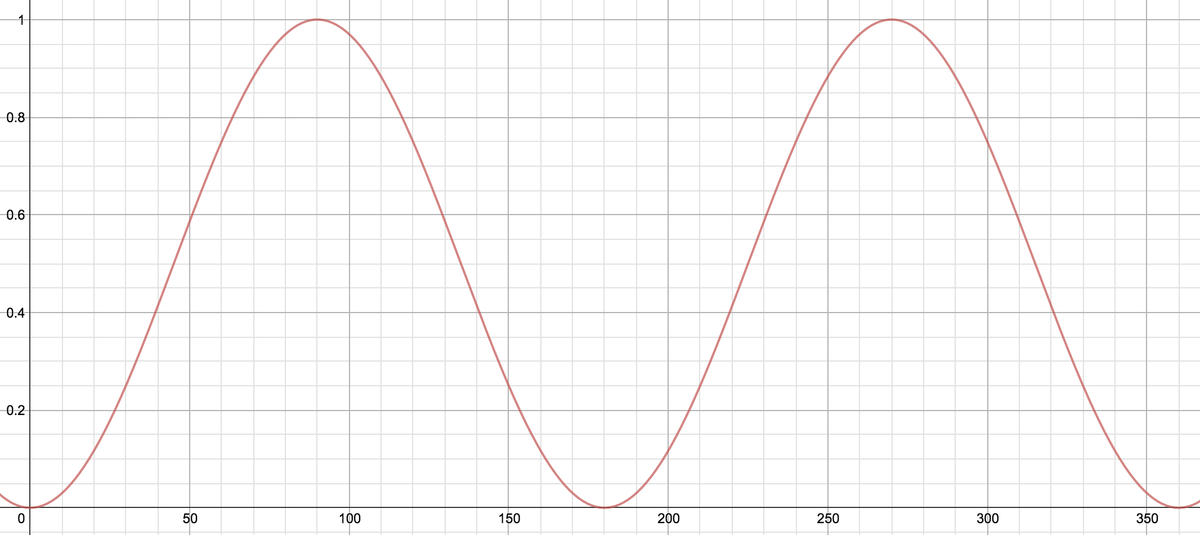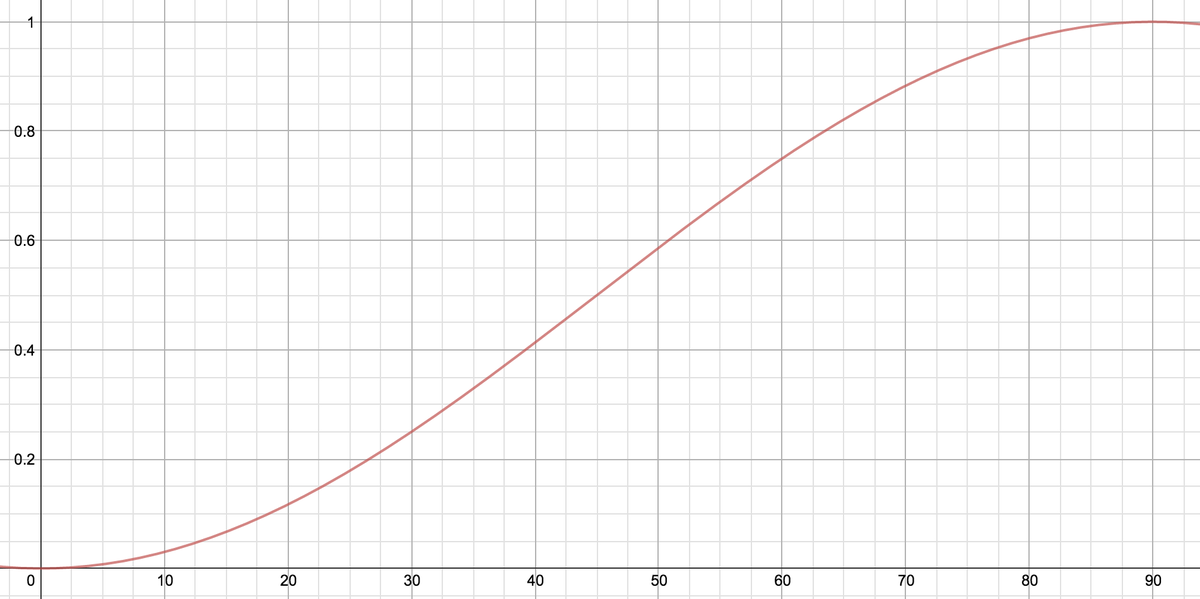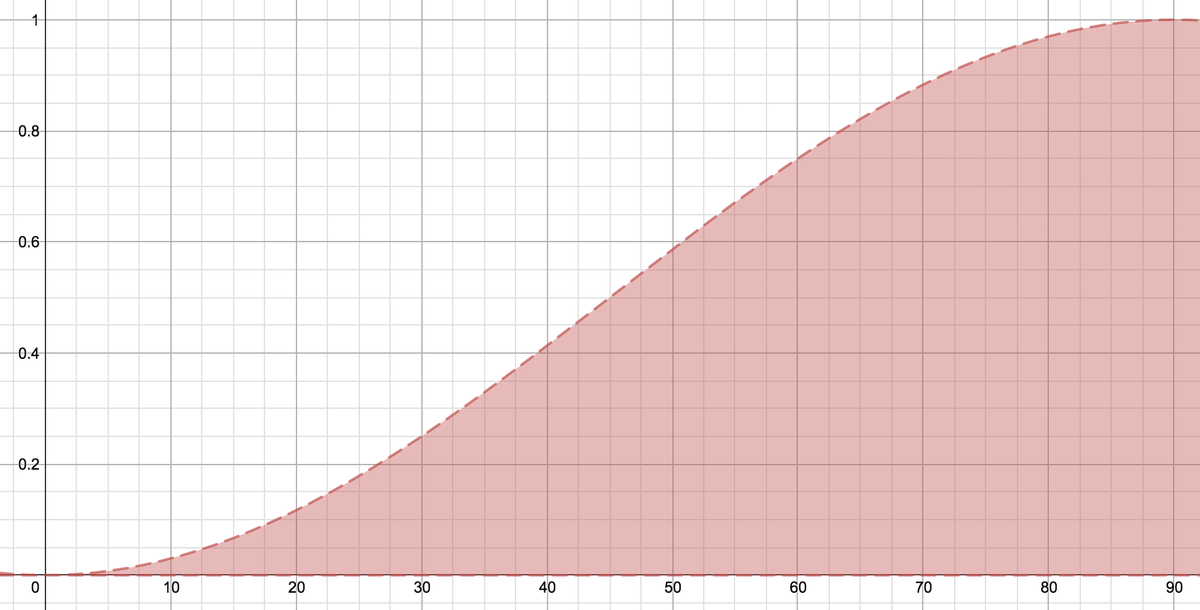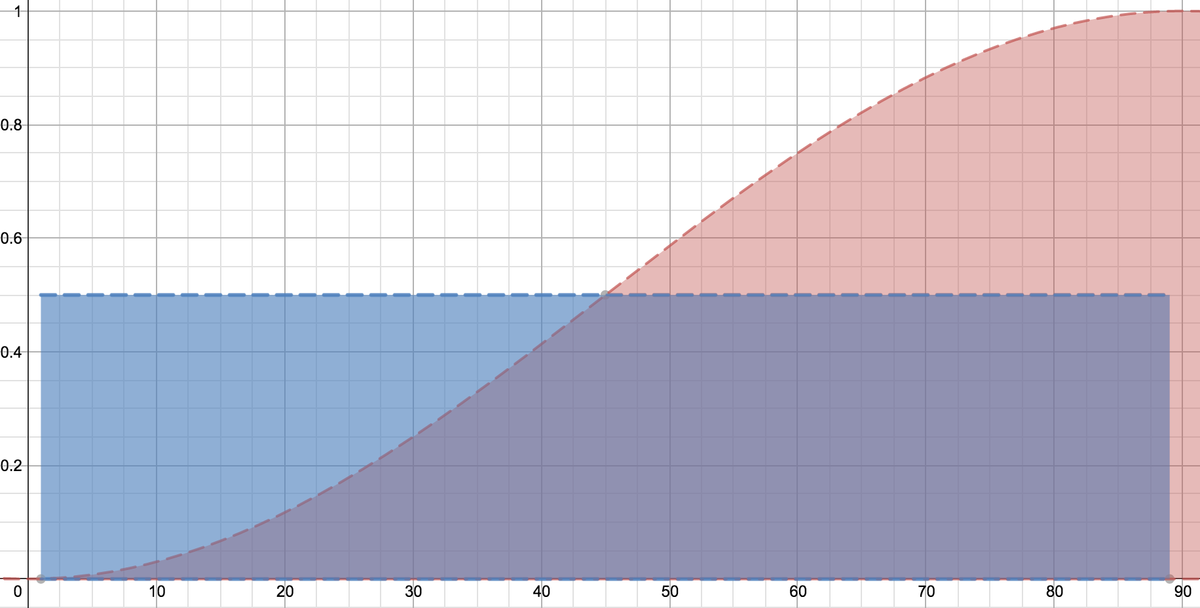It's so easy for summation
n = 1 ∑ 8 9 ( sin n ∘ cos n ∘ tan n ∘ ) = ?
The answer is 44.5.
This section requires Javascript.
You are seeing this because something didn't load right. We suggest you, (a) try
refreshing the page, (b) enabling javascript if it is disabled on your browser and,
finally, (c)
loading the
non-javascript version of this page
. We're sorry about the hassle.
3 solutions
Moderator note:
Good use of the complementary angles: sin ( A ) = cos ( 9 0 − A ) . What would the sum be if the number 8 9 is replaced by the number 9 0 ?
[Response to Challenge Master Note]
Well, the sum would be undefined then since tan ( 9 0 ∘ ) is undefined (or we can say it has no finite value).
The usage of the simplification of general term for evaluating the sum done in this solution is only valid when all the terms of the sum is defined, which is possible if and only if n = ( 2 a + 1 ) × 9 0 ∀ a ∈ Z .
If the upper sum limit is changed to 9 0 , we have the last term of the sum with n = 9 0 which doesn't go into our simplification. Rather, that undefined term makes the whole sum undefined.
@Prasun Biswas , we really liked your comment, and have converted it into a solution. If you subscribe to this solution, you will receive notifications about future comments.
As others have noted, sin n ∘ cos n ∘ tan n ∘ = sin 2 n ∘ .
What does
sin
2
n
∘
look like? See below.

But we're interested in the interval from
n
∘
=
1
to
n
∘
=
8
9
:

The summation is similar to the following integral:

... which is equal to the area of this rectangle:

... which has an area of 0 . 5 × 9 0 = 4 5 .
sin n *cos n * tan n = sin n * sin n
sin 1=cos 89
sin n * sin n+cos n * cos n =1
sin 45* sin 45=0.5
Using these you can get answer
We first simplify the general term as follows:
sin ( n ∘ ) cos ( n ∘ ) tan ( n ∘ ) = cos ( n ∘ ) sin ( n ∘ ) cos ( n ∘ ) sin ( n ∘ ) = sin 2 ( n ∘ )
Now, we use the identity sin ( 9 0 ∘ − A ∘ ) = cos ( A ∘ ) to rewrite our sum along with the simplified form of general term obtained. We also use the identity sin 2 θ + cos 2 θ = 1 ∀ θ ∈ R which also works for θ in degrees since they are real when expressed in radians. Call the sum S . We get,
S = n = 1 ∑ 8 9 sin 2 ( n ∘ ) = ( n = 1 ∑ 4 4 ( sin 2 ( n ∘ ) + cos 2 ( n ∘ ) ) ) + sin 2 ( 4 5 ∘ ) ⟹ S = ( n = 1 ∑ 4 4 1 ) + 2 1 = 4 4 × 1 + 2 1 = 4 4 . 5